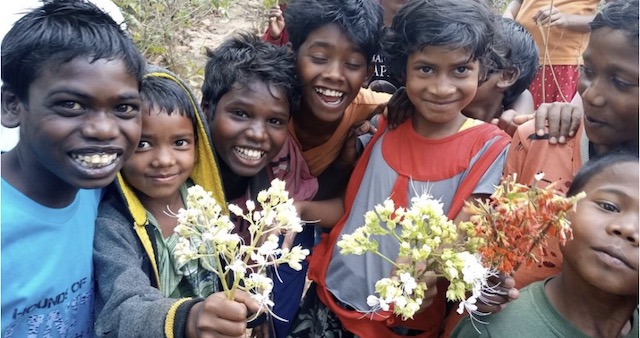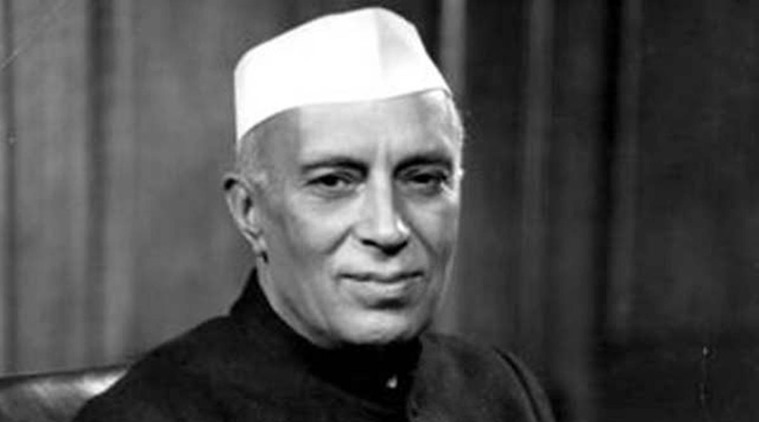
Photo Author provided © Down to Earth 2020 | Learn more >>
How Adivasis of one Jharkhand village are trying to preserve ethnomedicine
With ‘civilisation’ and ‘modernity’ having made inroads into India’s tribal areas, its heritage of traditional tribal systems of medicine is increasingly under threat […]
“‘Ethnomedicine’, as defined by George Foster and Barbara Anderson in their 1978 essay Medical Anthropology, is the totality of health, knowledge, values, beliefs, skills and practices of members of a society, including all the clinical and non-clinical activities that relate to their health needs. According to an estimate of the World Health Organization, approximately 88 per cent of people in developing countries rely chiefly on traditional medicines, mostly plant extracts, for their primary health care needs. [A]bout 74 per cent of the 121 biological active plant-derived compounds currently in use worldwide, have been discovered through follow-up research to verify the authenticity of information concerning the folk or ethnomedical uses of the plants. […]
Loss of indigenous knowledge also has a significant impact on the development of modern medicine. Charles Anyinam, in his article Ecology and Ethnomedicine, wrote that folklore over the years had proved to be an invaluable guide in the present day screening of drugs.
Many important modern drugs (such as digitoxin, reserpine, tubocurarine, ephedrine, to name a few) have been discovered by following leads from folklore.As NR Farnsworth, in his article The Role of Ethnopharmacology in Drug Development, points out, about 74 per cent of the 121 biological active plant-derived compounds currently in use worldwide, have been discovered through follow-up research to verify the authenticity of information concerning the folk or ethnomedical uses of the plants.
For centuries, healers and indigenous people have been collecting medicines from local plants and animals without creating any imbalance in the population dynamics of the species because of the low level of harvest.
Commoditisation of plant medicine and animal parts was an insignificant aspect of the practice of ethnomedicine. In the last few decades, however, there has been a marked increase in the sale of herbal remedies. […]
Source: “How Adivasis of one Jharkhand village are trying to preserve ethnomedicine” by Dibyendu Chaudhuri , Parijat Ghosh, Temba Oraon, Vivek Sinha, Down to Earth, 22 December 2020
URL: https://www.downtoearth.org.in/blog/health/how-adivasis-of-one-jharkhand-village-are-trying-to-preserve-ethnomedicine-74747
Date Visited: 4 May 2022
The vitality of different styles of massage practiced by tribal communities across the State, besides the curative use of herbal vapour among them, were on display during a week-long workshop for tribal youth organised by the Kerala Institute for Research, Training and Development of Scheduled Castes and Scheduled Tribes (KIRTADS) here on the KIRTADS campus. […]
Besides five students each from five ethno medicine centres in different districts of the State, nearly 45 youth hailing from the Paniya and Adiya tribal communities across Kerala participated in the workshop.
“The demonstration of different massaging methods practiced by the tribal communities was a real learning experience for the participants,” N. Viswanathan Nair, former director of KIRTADS and one of the organisers, said. […]
Source: Restorative power of massage on show, The Hindu, 16 February 2013
Address : https://www.thehindu.com/todays-paper/tp-national/tp-kerala/restorative-power-of-massage-on-show/article4421236.ece
Date Visited: 4 May 2022
Heavily exploited to fuel the booming global market for herbal drugs, more than 100 medicinal plant species in Kerala have been pushed to the verge of extinction. Unsustainable extraction from the wild and unscientific methods of cultivation are endangering more species.
Scientists feel that the threat to medicinal plants would impact on the rich biodiversity of Kerala.
“India, having two out of the 34 biodiversity hotspots of the world, is perhaps the largest producer of medicinal plants in the world. Of the 43,000 plant species recorded in India, 3,000 are known to possess medicinal properties,” says S. Rajasekharan, Head, Department of Ethnomedicine, Jawaharlal Nehru Tropical Botanic Garden and Research Institute (JNTBGRI) at Palode near here.
800 licensed units
The vast resource of medicinal plants has been widely used in various traditional systems of medicine like Ayurveda, Siddha, Unani, and Amchi. There are more than 800 licensed units in Kerala manufacturing traditional medicines. It is estimated that 85 to 90 per cent of the medicinal plants used by these units are collected from the wild.
“In Kerala more than 900 medicinal plants are used in both classical and oral health tradition including tribal medicines. Out of these 200 medicinal plants are largely extracted for the preparation of diverse medicinal and food products,” observes Dr. Rajasekharan. […]
Dr. Rajasekharan feels that inventorisation, documentation and evaluation of medicinal plants should be given top priority. […]
The indiscriminate destruction of plants in public places by workers engaged under the employment guarantee scheme is a major cause for concern, he says.
Source: “Medicinal plant resources under stress in the State” by T. Nandakumar, The Hindu, 6 June 2012
Address : https://www.thehindu.com/todays-paper/tp-national/tp-kerala/medicinal-plant-resources-under-stress-in-the-state/article3495551.ece
Date Visited: 4 May 2022
The Jawaharlal Nehru Tropical Botanic Garden and Research Institute (JNTBGRI) here is embarking on a research project to evaluate the platelet augmentation activity of selected medicinal plants found in the Western Ghats. The project has been taken up as a response to the epidemic of viral fevers, including dengue fever, leptospirosis and malaria, across the State. […]
Director, JNTBGRI, Dr. P.G. Latha told The Hindu that the project was designed as an intervention to tackle the rising incidence of dengue infection that often acquired epidemic proportions in Kerala. […]
“There are likely to be plants with more potent activity. This project is all about identifying such species. If we come up with positive leads, JNTBGRI will think of tying up with Oushadhi for clinical trials,” she said.
According to Dr. S. Rajasekharan, Senior Project Consultant and former Head, Division of Ethnomedicine and Ethnopharmacology, JNTBGRI, the selection of medicinal plants for the study will be based on traditional knowledge obtained from classical and oral health traditions, including tribal medicine.
Source: “Search for herbal cure for viral fevers” by T. Nandakumar, The Hindu, 14 June 2013
Address : https://www.thehindu.com/news/national/kerala/search-for-herbal-cure-for-viral-fevers/article4811761.ece
Date Visited: 4 May 2022

Photo © Indian Express
The Jawarharlal Nehru Tropical Botanical Garden and Research Institute (JNTBGRI), as part of its developmental plans, will spend Rs.50 lakh to turn the 2015 National Games Village eco-friendly. The 50,000 sq. ft lawn area and the boundary walls of the Games Village will be decorated with carpet grass. Five thousand potted plants will be on display and the village will also have eco-friendly sculptures.
Source: The Hindu, 20 October 2014
Address : https://www.thehindu.com/todays-paper/tp-in-school/kerala/article6517242.ece
Date Visited: 4 May 2022
Athletes and sports officials from various States can look forward to a soothing environment during their stay at the National Games Village at Menankulam, near here, next year. […]
The highlight of the work will be the herbal, spices and bamboo gardens. All the plants will have detailed identification boards with relevant information for easy understanding. The press note said the greenery would be interspersed with sculptures made from eco-friendly materials. […]
The JNTBGRI is making necessary arrangements to overcome the problem posed by the poor water holding capacity of the soil at Menankulam.
The plants will be brought from the JNTBGRI campus at Puthenthope and the research institute at Palode.
Source: “JNTBGRI to green Games Village” by T. Nandakumar, The Hindu, 16 October 2014
Address : https://www.thehindu.com/todays-paper/tp-national/tp-kerala/jntbgri-to-green-games-village/article6504888.ece
Date Visited: 4 May 2022
[Bold typeface added above for emphasis]
“It was assumed that tribal people have same health problems, similar needs and hence the uniform national pattern of rural health care would be applicable to them as well, albeit with some alteration in population: provider ratio. The different terrain and environment in which they live, different social systems, different culture and hence different health care needs were not addressed.” – Abhay Bang in Report of the Expert Committee on Tribal Health >>
Learn more
Atree.org | Ashoka Trust for Research in Ecology & the Environment (posts)
Biodiversity | Hyderabad biodiversity pledge | Nilgiri Biosphere
Climate change | United Nations on climate change
eBook | Background guide for education
eLearning: Center for World Indigenous Studies
Health and nutrition | Recommendations by the Expert Committee
Tips for using interactive maps
Toggle to normal view (from reader view) should the interactive map not be displayed by your tablet, smartphone or pc browser
For details and hyperlinks click on the rectangular button (left on the map’s header)
Scroll and click on one of the markers for information of special interest
Explore India’s tribal cultural heritage with the help of another interactive map >>